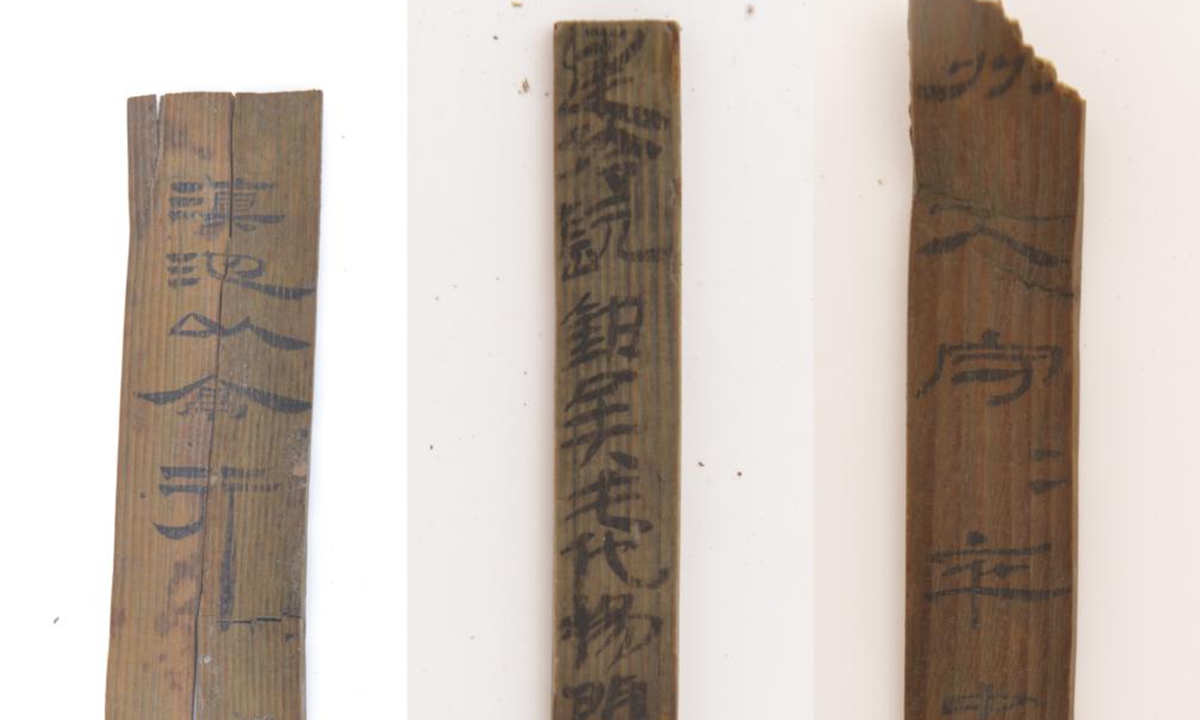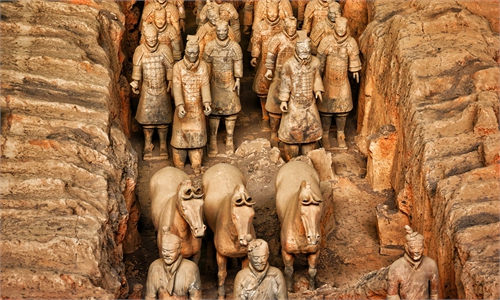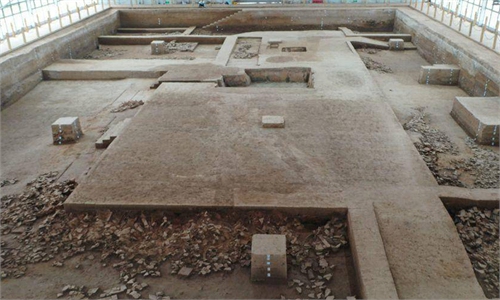ARTS / CULTURE & LEISURE
2,000-year-old bamboo and wooden slips found in Yunnan
Records reveal ancient social administrative system

Photo: Xinhua
The Yunnan Institute of Cultural Relics and Archaeology on Monday announced that more than 10,000 ancient bamboo and wooden slips, known as jiandu, have been found at the more than 2,000-year-old Hebosuo Site in Kunming, Southwest China's Yunnan Province. Prior to the invention of paper and its widespread usage, slips of bamboo or wooden slips were tied together to form "books" that could be written upon and rolled up like a scroll.
Among the numerous slips, 2,000 of them still bear clear written Chinese characters.
Some of the slips record the names of 12 counties, such as "Dian Chi county" and "Jian Ling county," which once belonged to the Yizhou Prefecture, an ancient region that was founded by Emperor Wu of the Han Dynasty (206BC-AD220) after being defeated and started incorporation of the Dian Kingdom, a regime founded by an ancient ethnic group that lived along what is now the southwest frontier of Yunnan Province.
Other characters such as "county magistrate," and "Dian Cheng" (prime minister of Dian management) were also discovered on the slips, Tao Zhongjun, a Chinese historian, told the Global Times on Tuesday, noting that such information shows a "well designed" social administrative system was used to govern the southwest border area.
Titles such as "Dian Cheng" reveal special political roles were set up by the Han government in the southwest area, said Jiang Zhilong, lead archaeologist on the Hebosuo project.
"Such discoveries are evidence that shows China was a unified country made up of multi-ethnic cultures," Jiang noted.
Parts of the Analects of Confucius, the fundamental philosophical guide to Confucianism, were also found on the slips. Such a text may have been a "training text" or "guide book" for people, especially the governors at that time, Chu Xin, a cultural expert, told the Global Times.
The content of the slips covers a wide variety of topics, including judicial documents and texts related to the administrative system, transportation and ethnic relations, said Chen Wei, an expert at the Center of Bamboo and Silk Manuscripts, Wuhan University.
The home of the ancient Dian people, the Hebosuo Site is where the well-known Dianwang Gold Seal was found. The seal, made of gold, was gifted by the Emperor Wu of Han Dynasty to the King of Dian.
The gold seal weights 90 grams and is adorned with a snake totem, "solid proof" of the Dian culture's existence, Tao said.
The Dian culture has long been considered a mystery in Chinese history as it was rarely documented except for in Records of the Historian, a monumental work of history written by Sima Qian.
"It shows the Han Dynasty's wisdom in embracing and managing different ethnic cultures," Tao told the Global Times.



